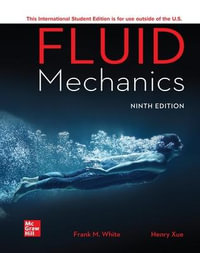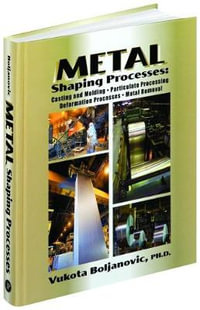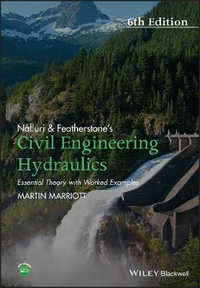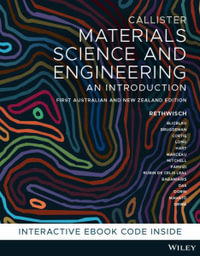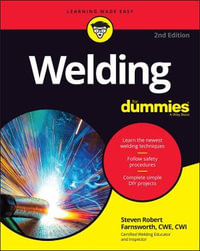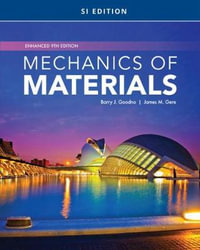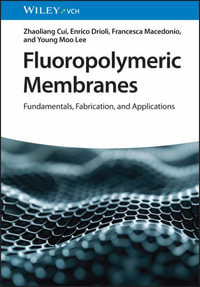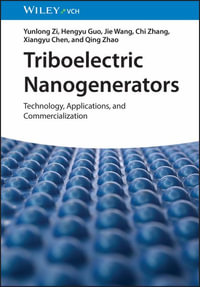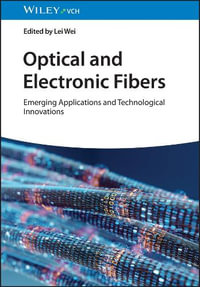Series Preface xiii
Preface xv
1 Introduction 1
1.1 Notation and Basic Definitions 1
1.2 Control Systems 3
1.2.1 Linear Tracking Systems 7
1.2.2 Linear Time-Invariant Tracking Systems 9
1.3 Guidance and Control of Flight Vehicles 10
1.4 Special Tracking Laws 13
1.4.1 Proportional Navigation Guidance 13
1.4.2 Cross-Product Steering 16
1.4.3 Proportional-Integral-Derivative Control 19
1.5 Digital Tracking System 24
1.6 Summary 25
Exercises 26
References 28
2 Optimal Control Techniques 29
2.1 Introduction 29
2.2 Multi-variable Optimization 31
2.3 Constrained Minimization 33
2.3.1 Equality Constraints 34
2.3.2 Inequality Constraints 38
2.4 Optimal Control of Dynamic Systems 41
2.4.1 Optimality Conditions 43
2.5 The Hamiltonian and the Minimum Principle 44
2.5.1 Hamilton?Jacobi?Bellman Equation 45
2.5.2 Linear Time-Varying System with Quadratic Performance
Index 47
2.6 Optimal Control with End-Point State Equality Constraints
48
2.6.1 Euler?Lagrange Equations 50
2.6.2 Special Cases 50
2.7 Numerical Solution of Two-Point Boundary Value Problems
52
2.7.1 Shooting Method 54
2.7.2 Collocation Method 57
2.8 Optimal Terminal Control with Interior Time Constraints
61
2.8.1 Optimal Singular Control 62
2.9 Tracking Control 63
2.9.1 Neighboring Extremal Method and Linear Quadratic
Control 64
2.10 Stochastic Processes 69
2.10.1 Stationary Random Processes 75
2.10.2 Filtering of Random Noise 77
2.11 Kalman Filter 77
2.12 Robust Linear Time-Invariant Control 81
2.12.1 LQG/LTR Method 82
2.12.2 H2/H?E?E Design Methods 89
2.13 Summary 96
Exercises 98
References 101
3 Optimal Navigation and Control of Aircraft 103
3.1 Aircraft Navigation Plant 104
3.1.1 Wind Speed and Direction 110
3.1.2 Navigational Subsystems 112
3.2 Optimal Aircraft Navigation 115
3.2.1 Optimal Navigation Formulation 116
3.2.2 Extremal Solution of the Boundary-Value Problem:
Long-Range Flight Example 119
3.2.3 Great Circle Navigation 121
3.3 Aircraft Attitude Dynamics 128
3.3.1 Translational and Rotational Kinetics 132
3.3.2 Attitude Relative to the Velocity Vector 135
3.4 Aerodynamic Forces and Moments 136
3.5 Longitudinal Dynamics 139
3.5.1 Longitudinal Dynamics Plant 142
3.6 Optimal Multi-variable Longitudinal Control 145
3.7 Multi-input Optimal Longitudinal Control 147
3.8 Optimal Airspeed Control 148
3.8.1 LQG/LTR Design Example 149
3.8.2 H?E?E Design Example 160
3.8.3 Altitude and Mach Control 166
3.9 Lateral-Directional Control Systems 173
3.9.1 Lateral-Directional Plant 173
3.9.2 Optimal Roll Control 177
3.9.3 Multi-variable Lateral-Directional Control:
Heading-Hold Autopilot 180
3.10 Optimal Control of Inertia-Coupled Aircraft Rotation
183
3.11 Summary 189
Exercises 192
References 194
4 Optimal Guidance of Rockets 195
4.1 Introduction 195
4.2 Optimal Terminal Guidance of Interceptors 195
4.3 Non-planar Optimal Tracking System for Interceptors: 3DPN
199
4.4 Flight in a Vertical Plane 208
4.5 Optimal Terminal Guidance 211
4.6 Vertical Launch of a Rocket (Goddard?s Problem)
216
4.7 Gravity-Turn Trajectory of Launch Vehicles 219
4.7.1 Launch to Circular Orbit: Modulated Acceleration
220
4.7.2 Launch to Circular Orbit: Constant Acceleration
227
4.8 Launch of Ballistic Missiles 228
4.8.1 Gravity-Turn with Modulated Forward Acceleration
232
4.8.2 Modulated Forward and Normal Acceleration 233
4.9 Planar Tracking Guidance System 237
4.9.1 Stability, Controllability, and Observability
241
4.9.2 Nominal Plant for Tracking Gravity-Turn Trajectory
243
4.10 Robust and Adaptive Guidance 247
4.11 Guidance with State Feedback 250
4.11.1 Guidance with Normal Acceleration Input 250
4.12 Observer-Based Guidance of Gravity-Turn Launch Vehicle
254
4.12.1 Altitude-Based Observer with Normal Acceleration
Input 255
4.12.2 Bi-output Observer with Normal Acceleration Input
260
4.13 Mass and Atmospheric Drag Modeling 266
4.14 Summary 274
Exercises 275
References 275
5 Attitude Control of Rockets 277
5.1 Introduction 277
5.2 Attitude Control Plant 277
5.3 Closed-Loop Attitude Control 281
5.4 Roll Control System 281
5.5 Pitch Control of Rockets 282
5.5.1 Pitch Program 282
5.5.2 Pitch Guidance and Control System 283
5.5.3 Adaptive Pitch Control System 288
5.6 Yaw Control of Rockets 294
5.7 Summary 295
Exercises 295
Reference 296
6 Spacecraft Guidance Systems 297
6.1 Introduction 297
6.2 Orbital Mechanics 297
6.2.1 Orbit Equation 298
6.2.2 Perifocal and Celestial Frames 299
6.2.3 Time Equation 301
6.2.4 Lagrange?s Coefficients 304
6.3 Spacecraft Terminal Guidance 305
6.3.1 Minimum Energy Orbital Transfer 307
6.3.2 Lambert?s Theorem 311
6.3.3 Lambert?s Problem 313
6.3.4 Lambert Guidance of Rockets 322
6.3.5 Optimal Terminal Guidance of Re-entry Vehicles
327
6.4 General Orbital Plant for Tracking Guidance 334
6.5 Planar Orbital Regulation 339
6.6 Optimal Non-planar Orbital Regulation 345
6.7 Summary 352
Exercises 352
References 355
7 Optimal Spacecraft Attitude Control 357
7.1 Introduction 357
7.2 Terminal Control of Spacecraft Attitude 357
7.2.1 Optimal Single-Axis Rotation of Spacecraft 358
7.3 Multi-axis Rotational Maneuvers of Spacecraft 364
7.4 Spacecraft Control Torques 375
7.4.1 Rocket Thrusters 375
7.4.2 Reaction Wheels, Momentum Wheels and Control Moment
Gyros 377
7.4.3 Magnetic Field Torque 378
7.5 Satellite Dynamics Plant for Tracking Control 379
7.6 Environmental Torques 380
7.6.1 Gravity-Gradient Torque 382
7.7 Multi-variable Tracking Control of Spacecraft Attitude
383
7.7.1 Active Attitude Control of Spacecraft by Reaction
Wheels 385
7.8 Summary 389
Exercises 389
References 390
Appendix A: Linear Systems 391
A.1 Definition 391
A.2 Linearization 392
A.3 Solution to Linear State Equations 392
A.3.1 Homogeneous Solution 393
A.3.2 General Solution 393
A.4 Linear Time-Invariant System 394
A.5 Linear Time-Invariant Stability Criteria 395
A.6 Controllability of Linear Time-Invariant Systems 395
A.7 Observability of Linear Time-Invariant Systems 395
A.8 Transfer Matrix 396
A.9 Singular Value Decomposition 396
A.10 Linear Time-Invariant Control Design 397
A.10.1 Regulator Design by Eigenstructure Assignment
397
A.10.2 Regulator Design by Linear Optimal Control 398
A.10.3 Linear Observers and Output Feedback Compensators
398
References 400
Appendix B: Stability 401
B.1 Preliminaries 401
B.2 Stability in the Sense of Lagrange 402
B.3 Stability in the Sense of Lyapunov 404
B.3.1 Asymptotic Stability 406
B.3.2 Global Asymptotic Stability 406
B.3.3 Lyapunov?s Theorem 407
B.3.4 Krasovski?s Theorem 408
B.3.5 Lyapunov Stability of Linear Systems 408
References 408
Appendix C: Control of Underactuated Flight Systems
409
C.1 Adaptive Rocket Guidance with Forward Acceleration Input
409
C.2 Thrust Saturation and Rate Limits (Increased Underactuation)
415
C.3 Single- and Bi-output Observers with Forward Acceleration
Input 417
References 432
Index 433




